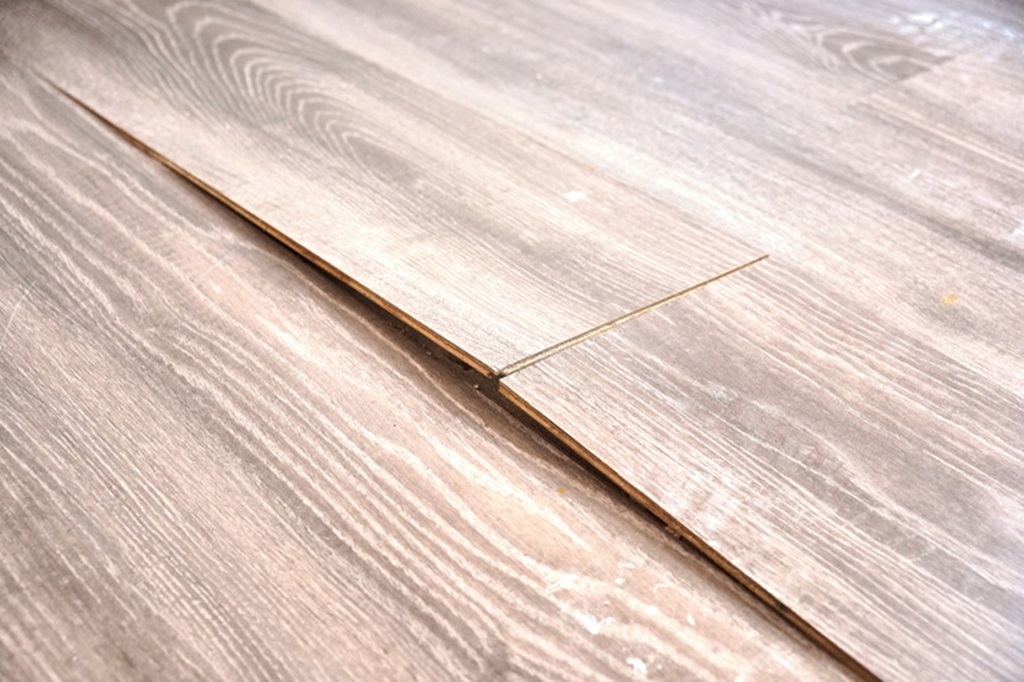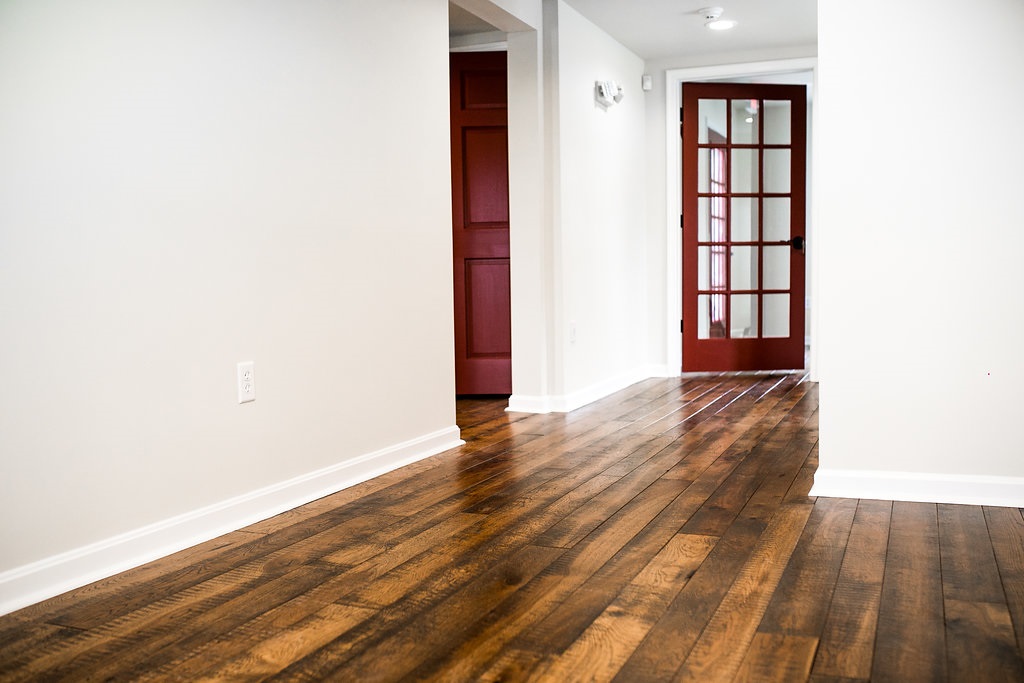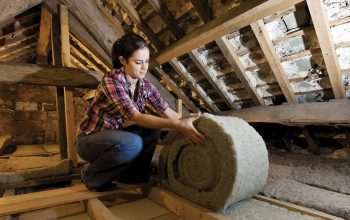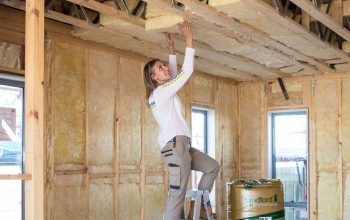To install laminate flooring on an uneven wood floor, first, assess the level of unevenness and determine if any repairs are needed. Then, use a self-leveling compound or plywood to create a smooth and even surface for the laminate flooring.
Preparation
To successfully install laminate flooring on an uneven wood floor, thorough preparation is essential. Start by assessing the floor’s condition and addressing any bumps or dips. Use a leveling compound and underlayment to create a smooth surface, ensuring the new flooring fits snugly and lasts for years to come.
Materials Needed
To get started with installing laminate flooring on an uneven wood floor, you’ll need the following materials:
- Laminate flooring planks
- Underlayment
- Hammer
- Tape measure
- Utility knife
- Pry bar
- Nails or screws
- Subfloor leveling compound
- Level
- Moisture barrier
Subfloor Preparation
Before you can begin installing your laminate flooring on an uneven wood floor, it’s important to prepare the subfloor properly.
Follow these steps:
- Clear the area: Remove any furniture or obstacles from the room to create a clear working space.
- Inspect the subfloor: Check your existing wood floor for any damage or loose boards. Replace or repair any areas that are not stable.
- Clean the subfloor: Sweep or vacuum the floor to remove any debris or dust. A clean surface will ensure proper adhesion of the underlayment.
- Level the floor: Use a long level to determine the areas of the floor that are uneven. Mark these spots for later reference.
- Fill low spots: Apply a subfloor leveling compound to fill in any depressions or low spots on the floor. Follow the manufacturer’s instructions for mixing and applying the compound.
- Allow the compound to dry: Give the leveling compound enough time to fully dry and harden. This will create a smooth and even surface for the underlayment and laminate flooring.
- Install the underlayment: Roll out the underlayment material across the entire subfloor area. Trim any excess material and overlap the seams according to the manufacturer’s instructions.
- Ensure moisture protection: Install a moisture barrier to prevent any moisture from seeping up into the laminate flooring. This is especially important for uneven wood floors that may have gaps or cracks.
- Check for flatness: Use a level to verify that the subfloor is now level and flat. If there are still uneven spots, repeat the leveling compound application process until the subfloor is completely level.
By properly preparing your subfloor, you’ll ensure a solid foundation for your laminate flooring installation on an uneven wood floor. Taking the time to address any unevenness before proceeding will help prevent future issues and ensure a professional-looking final result.
Addressing Uneven Surfaces
Learn how to install laminate flooring on an uneven wood floor with these simple steps. Avoid common mistakes, such as using inadequate underlayment, which can cause the flooring to sink and shift over time. Follow proper subfloor preparation techniques to ensure a smooth and durable installation.
If you have an uneven wood floor and want to install laminate flooring on top of it, addressing the uneven surface is crucial for a successful installation. Ignoring the unevenness can lead to issues like squeaking, buckling, and an overall poor-looking finish. However, there are a few effective methods to tackle this problem and ensure a smooth and stable laminate floor.
Scatter Nailing
Scatter nailing is a technique that can be used to address minor irregularities in the wood subfloor. This method involves driving nails at random angles throughout the floor, focusing on areas where the floor is uneven. By doing so, you can secure the subfloor and minimize movement, creating a more stable surface for the laminate flooring. Remember to use nails with a flat head to avoid damaging the laminate planks during installation.
Using Self-Leveling Underlayment
If you’re dealing with more significant unevenness, using a self-leveling underlayment is an excellent solution. This method involves applying a liquid compound that spreads across the subfloor and fills in depressions and gaps. The self-leveling underlayment creates a flat and seamless surface, ensuring that your laminate flooring will lie perfectly flat without any noticeable bumps or inconsistencies.
To use self-leveling underlayment, follow these steps:
- Clean the subfloor thoroughly, removing any debris, dust, or loose materials that could interfere with the leveling compound.
- Apply a primer to the subfloor to improve adhesion and ensure a strong bond between the underlayment and the subfloor.
- Mix the self-leveling compound according to the manufacturer’s instructions.
- Pour the compound onto the subfloor and use a trowel or squeegee to spread it evenly. Work quickly, as the compound sets relatively fast.
- Use a spiked roller to eliminate any air bubbles and ensure a smooth finish.
- Allow the underlayment to dry completely before installing the laminate flooring.
Using self-leveling underlayment not only levels out the uneven surface but also provides additional soundproofing and insulation benefits.
When installing laminate flooring on an uneven wood floor, addressing the uneven surface is crucial for a successful and long-lasting installation. Whether you choose to scatter nails or use a self-leveling underlayment, tackling the unevenness will result in a beautiful and stable laminate floor that will enhance the aesthetics and durability of your space.
Choosing The Right Underlayment
Laminate flooring is a popular choice for homeowners looking to revamp their interiors. However, installing laminate flooring on an uneven wood floor can pose a challenge. One crucial aspect to consider in this process is choosing the right underlayment. The right underlayment not only ensures a smooth and sturdy foundation but also plays a significant role in enhancing the durability and insulation of the flooring. Let’s delve into the importance of choosing the right underlayment for an uneven wood floor.
Best Underlay For Uneven Floor
When it comes to an uneven wood floor, not all underlayments are created equal. The best underlayment for this scenario is one that offers excellent flexibility and support to compensate for the unevenness of the base. Products such as STEICO Wood Fiber Underlayment are specifically designed to provide a stable base and effectively level out minor imperfections in the subfloor, making them a top choice for uneven surfaces.
Importance Of Underlayment
The underlayment plays a pivotal role in ensuring the longevity and performance of the laminate flooring, especially when dealing with an uneven wood floor. It acts as a moisture barrier, minimizes sound transmission, and provides thermal insulation. Additionally, the right underlayment can compensate for inconsistencies in the subfloor, preventing premature wear and damage to the laminate flooring.
Installation Tips
When installing laminate flooring on an uneven wood floor, there are several important tips to keep in mind. By following these guidelines, you can ensure a successful installation and achieve a smooth and level finished floor.
Tools For Installation
Before getting started, gather the necessary tools for the installation. These include:
Finch & Mclay Floor Install…
Project Source Laminate a…
Roberts Laminate and Wood a…
NAACOO Laminate Flooring To…
WorkPro Laminate Wood Floor…
Having the right tools on hand will make the installation process much smoother and more efficient.
Common Mistakes To Avoid
When installing laminate flooring on an uneven wood floor, it’s important to avoid certain common mistakes that can lead to uneven or unstable flooring.
These mistakes include:
- Not properly preparing the subfloor before installation
- Using the wrong underlayment for uneven floors
- Skipping the leveling process
- Not using transition strips to bridge height differences
- Overlooking the importance of proper acclimation
Avoiding these mistakes will help ensure a smooth and level laminate floor that will last for years to come.
Final Touches
Learn how to install laminate flooring on an uneven wood floor with these simple steps. By following the proper guidelines and using the right tools, you can achieve a smooth and beautiful result that will enhance the look of your space.
Applying Transition Strips
When it comes to installing laminate flooring on an uneven wood floor, applying transition strips is an important final touch. Transition strips not only provide a smooth transition between different flooring materials but also help to cover up any gaps or unevenness between the planks.
Here’s a step-by-step guide for applying transition strips:
- Measure the width of the doorway or the area where the transition strip will be installed.
- Cut the transition strip to the measured length using a saw or a utility knife.
- Place the transition strip in the doorway or the area where it will be installed, ensuring that it covers the gap between the two flooring types.
- Secure the transition strip in place using adhesive or nails, depending on the type of strip you are using.
- Ensure that the transition strip is level and flush with both flooring surfaces for a seamless transition.
Taking Care Of Uneven Transitions
Uneven transitions can be a challenge when installing laminate flooring on an uneven wood floor. However, there are a few things you can do to ensure a smooth and level transition:
- Use a self-leveling compound to fill in any gaps or uneven areas between the planks before installing the transition strips. This will help create a smooth surface for the strips to sit on.
- If the unevenness is significant, you may need to use a shim or leveling material under the transition strip to lift it up and create a level surface.
- Make sure to sand down any high spots or bumps on the wood floor before installing the laminate flooring. This will help prevent uneven transitions and ensure a more stable and secure installation.
- Consider using an underlayment that is specifically designed for uneven floors. These underlayments can help provide additional support and cushioning, as well as help reduce the appearance of unevenness.
By following these final touches, you can ensure that your laminate flooring installation on an uneven wood floor looks seamless and professional. Taking the time to apply transition strips properly and address any uneven transitions will not only enhance the aesthetic appeal of your flooring but also contribute to its long-term durability.
Conclusion
After following the steps outlined in this guide, you should now feel confident in your ability to install laminate flooring on an uneven wood floor. By taking the time to prepare the subfloor, using the correct underlayment, and ensuring that the flooring is properly laid, you can achieve a beautiful and long-lasting result.
With these techniques, you can transform your uneven wood floor into a smooth and attractive surface for your new laminate flooring. Good luck with your project!
Frequently Asked Questions For How To Install Laminate Flooring On Uneven Wood Floor
Will Underlayment Help With Uneven Floor?
YES, underlayment can help level an uneven floor for a laminate installation, but it’s not recommended. Uneven surfaces can cause shifting and potential damage to the flooring.
Does the Floor Have To Be Perfectly Level For Laminate?
No, the floor does not have to be perfectly level for laminate flooring. Both vinyl and laminate floors can be installed over slightly uneven surfaces. However, it is important to ensure that the unevenness is not significant enough to cause boards to sink or shift, potentially damaging the flooring.
Is Laminate Good For Uneven Floors?
Laminate can be installed on slightly uneven floors. It is versatile, durable, and comes in various patterns and colors. However, an extremely uneven surface can cause boards to sink and shift, potentially damaging the flooring. It is recommended to level the floor before installation to avoid any issues.
What Happens If You Install Vinyl Plank On Uneven Floor?
Installing vinyl plank on uneven floors can lead to hollow spots, bouncing floors, and joint separation, causing the floor to fail. It’s important to ensure the floor is flat before installation.









